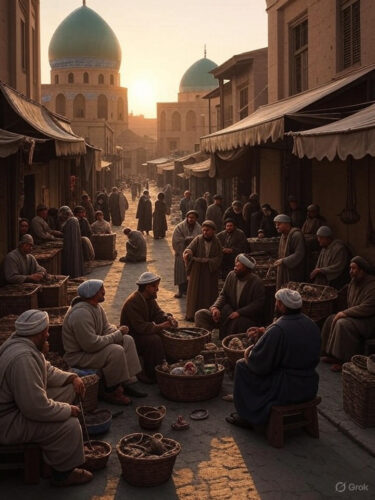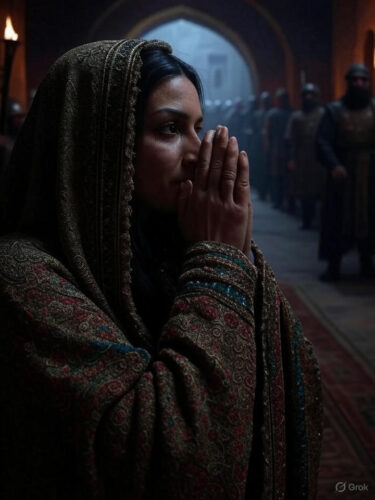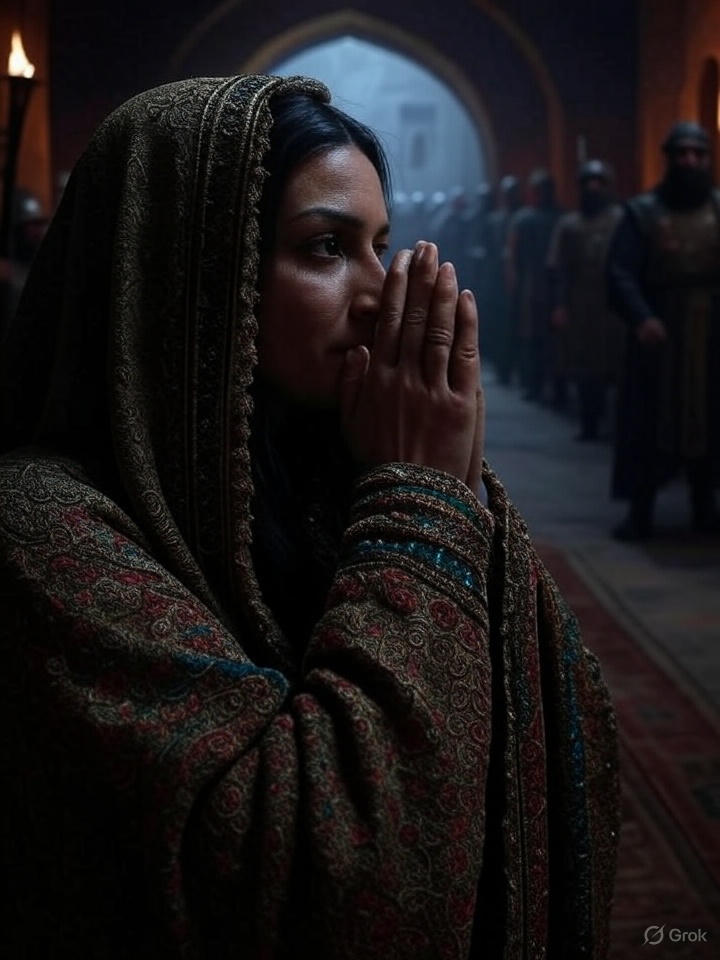On September 14, 786 AD, in the bustling heart of the Abbasid Caliphate, a young man named Harun ibn Muhammad ascended to the throne as the fifth caliph of the Abbasid dynasty. This was no ordinary transition of power; it marked the dawn of what historians often hail as the pinnacle of the Islamic Golden Age. Baghdad, the resplendent capital founded just a generation earlier by Harun’s great-uncle al-Mansur, buzzed with anticipation and subtle intrigue as news spread of the death of Harun’s brother, al-Hadi, and the swift proclamation of the new ruler. The air was thick with the scents of incense from the grand mosques and the distant echoes of the Tigris River lapping against its banks. Merchants in the souks whispered of omens, scholars debated the implications for the empire’s vast domains, and soldiers loyal to the Abbasid banner gathered to pledge their fealty. This event, occurring over 1,200 years ago, was a pivotal moment that reshaped the world of the medieval Near East, fostering an era of unparalleled intellectual, cultural, and economic flourishing. But beyond the annals of history, the story of Harun al-Rashid—known as “the Just” or “the Rightly Guided”—offers profound lessons in resilience, strategic wisdom, and visionary governance that resonate even in our modern lives.
To understand the significance of this day, we must delve deep into the tapestry of the Abbasid world. The Abbasid Caliphate, established in 750 AD after the violent overthrow of the Umayyad dynasty, represented a seismic shift in Islamic governance. The Umayyads, with their capital in Damascus, had been criticized for their Arab-centric policies and perceived favoritism toward Arab elites. The Abbasids, descendants of the Prophet Muhammad’s uncle Abbas, rose through a revolution fueled by Persian influences, Shia sympathies, and a promise of broader inclusivity. They relocated the capital to Baghdad in 762 AD, a move that symbolized a new era. Baghdad was not just a city; it was a meticulously planned metropolis, circular in design with walls, canals, and palaces radiating from the central Round City. By 786 AD, it had grown into a metropolis of perhaps half a million inhabitants, a crossroads of trade routes connecting China, India, Byzantium, and the African continent.
Harun al-Rashid was born around 763 or 766 AD in Rayy, a prosperous city in the Jibal region of modern-day Iran, then part of the Abbasid realm. His father was Muhammad al-Mahdi, the third Abbasid caliph, a ruler known for his piety and administrative reforms but also for his indulgence in luxuries. Harun’s mother, al-Khayzuran, was a Yemeni former slave who rose to become one of the most powerful women in Islamic history. Purchased by al-Mahdi during his governorship in Medina, she bore him three children: al-Hadi, Harun, and a daughter, Banuqa. Al-Khayzuran was no passive figure; she wielded influence behind the throne, advising on state matters, managing finances, and even leading prayers during her husband’s absences. Her ambition and shrewdness would prove crucial in Harun’s rise.
From a young age, Harun received an education befitting a future leader. Tutors schooled him in the Quran and hadith, the foundational texts of Islam, ensuring he could recite surahs with eloquence and interpret legal principles. He studied poetry, music, rhetoric, history, and geography, absorbing tales of ancient Persia, the exploits of Alexander the Great, and the maritime wonders of the Indian Ocean. Physical training was equally rigorous: archery, swordsmanship, horsemanship, and the arts of war prepared him for the mujahid life—the holy warrior role expected of caliphal heirs. By his teens, Harun was already displaying the charisma that would define him: tall and robust, with olive skin, wavy black hair, and piercing eyes, he cut an imposing yet approachable figure.
The political landscape of the 780s was fraught with tension. The Abbasid Empire stretched from the Atlantic shores of al-Andalus (modern Spain) to the borders of India, encompassing diverse peoples: Arabs, Persians, Berbers, Turks, and Copts. Internal threats included revolts by Alids (descendants of Ali, the Prophet’s cousin), who felt marginalized, and Kharijites, radical sects challenging caliphal authority. Externally, the Byzantine Empire loomed as a perennial foe, raiding border provinces and contesting control of Armenia and Anatolia. Harun’s entry into this arena came early. In 780 AD, at just 14 or 17 years old, he led his first military campaign against the Byzantines under the command of his father and the veteran general Abd al-Malik ibn Salih. The expedition was a success, pushing back Byzantine incursions and securing tribute.
But it was the campaign of 782 AD that catapulted Harun to prominence. Appointed as the nominal commander, with the Barmakid Yahya ibn Khalid as his advisor, Harun led an army of 95,000 men across Anatolia. The Barmakids, a Persian family of Buddhist origin who had converted to Islam, were rising stars in Abbasid administration. Yahya, formerly the vizier under al-Mansur, brought organizational genius to the campaign. Harun’s forces ravaged Byzantine lands, reaching the suburbs of Constantinople itself—the Queen of Cities, with its impregnable walls and fabled Hagia Sophia. Empress Irene, facing defeat, sued for peace, agreeing to an annual tribute of 70,000 gold dinars, hostages, and the release of Muslim prisoners. The return to Baghdad was triumphant: Harun was bestowed the laqab “al-Rashid,” meaning “the rightly guided,” and appointed crown prince. He was given governorship over the western provinces, from Syria to Azerbaijan, where he honed his administrative skills, building canals, mosques, and fortifications.
Al-Mahdi’s death in 785 AD brought al-Hadi to the throne. Al-Hadi, Harun’s elder brother, was a capable but paranoid ruler. His short reign was marred by attempts to sideline al-Khayzuran and the Barmakids, whom he saw as threats to his power. Rumors swirled of plots: al-Hadi imprisoned Yahya ibn Khalid and sought to disinherit Harun in favor of his own son, Ja’far. Al-Khayzuran, undeterred, maneuvered from the shadows. On September 14, 786 AD—or more precisely, the night of 13-14 September, corresponding to 15 Rabi’ I 170 AH—al-Hadi died suddenly in Baghdad. Official accounts cite an abdominal ulcer, but whispers of poisoning by al-Khayzuran or her agents persisted. The caliph’s deathbed was a scene of chaos: his son Ja’far claimed the throne, but loyalists wavered.
Al-Khayzuran acted decisively. She released Yahya from prison, promising him reinstatement as vizier if he backed Harun. The army’s pay, delayed under al-Hadi, was disbursed immediately to secure loyalties. Key commanders like Harthama ibn A’yan and Khuzayma ibn Khazim were summoned to the palace. Khuzayma, a fierce warrior, rallied 5,000 troops and confronted Ja’far, forcing him to renounce his claim under threat of violence. By dawn, Harun was proclaimed caliph in the Great Mosque of Baghdad. He led the Friday prayers that day, his voice steady as he invoked God’s mercy on the ummah. The public oath of allegiance, or bay’ah, followed, with governors across the empire notified by swift couriers on horseback. Coins were minted bearing Harun’s name: “Harun al-Rashid, Commander of the Faithful,” struck in gold dinars from mints in Baghdad, Basra, and Egypt.
The immediate aftermath was a whirlwind of consolidation. Harun pardoned many of al-Hadi’s prisoners, including Umayyads and Alids, signaling a policy of reconciliation. He reinstated the Barmakids: Yahya as vizier, and his sons Jafar, Fadl, and Musa in key posts. Under their guidance, the administration hummed with efficiency. Taxes were streamlined, irrigation projects expanded the fertile crescent’s agriculture, and trade flourished via the Silk Road and Indian Ocean routes. Baghdad’s markets overflowed with silks from China, spices from India, ivory from Africa, and paper from Samarkand—paper-making, introduced from China, revolutionized record-keeping and scholarship.
Harun’s reign, spanning 23 years until his death in 809 AD, was a golden interlude amid the caliphate’s broader arc. Militarily, he launched five major campaigns against Byzantium, personally leading some. In 795 AD, he sacked Heraclea and Amorium, forcing Emperor Constantine VI’s abdication. The 803 AD campaign culminated in the sack of Heraclea again, with Harun rejecting Byzantine overtures and imposing harsher terms. Domestically, he quelled revolts: in 786 AD, a Kharijite uprising in Arabia was crushed; in 793 AD, an Alid revolt in Mecca led by Husayn ibn Ali was suppressed, though Harun later showed leniency by allowing pilgrimage rights. In the east, he subdued the Talas River region, securing borders against Tibetan incursions.
Culturally, Harun’s court was a beacon. He patronized scholars like the polymath al-Kindi and the astronomer al-Fazari, who refined the astrolabe. The Bayt al-Hikma, or House of Wisdom, founded around 830 AD but seeded under Harun, became a translation hub, rendering Greek texts by Aristotle, Plato, and Galen into Arabic alongside Persian and Indian works. This synthesis fueled advancements in medicine, mathematics, and philosophy. Harun himself was a poet and musician, hosting nightly majalis—gatherings of intellectuals, singers, and storytellers. Legends from the Arabian Nights portray him wandering incognito with his vizier Jafar, dispensing justice to the common folk, though these tales blend fact with folklore.
The Barmakids’ influence peaked in the 790s. Jafar ibn Yahya, Harun’s closest companion, oversaw diplomacy, including exchanges with Charlemagne. In 801 AD, Harun sent an embassy with gifts: a mechanical water clock that chimed hours with birds, silks, and the elephant Abul-Abbas, who arrived in Aachen in 802 AD, delighting the Frankish court. These interactions bridged Islamic and European worlds, influencing Carolingian Renaissance art and science. Yet, the Barmakids’ fall in 803 AD was dramatic. Harun, perhaps envious of their power or swayed by rivals, arrested them on a whim during a picnic. Jafar was executed—beheaded in his home—and the family stripped of wealth. Al-Fadl ibn al-Rabi replaced them as vizier, but the empire’s administration suffered, foreshadowing decline.
Harun’s personal life was equally storied. He married Zubayda, his cousin and a granddaughter of al-Mansur, in 780 AD. Zubayda was a philanthropist, funding the Darb Zubayda pilgrimage route from Iraq to Mecca with wells and rest houses. Their son, al-Amin, born in 787 AD, was named heir due to his Abbasid purity. Another son, al-Ma’mun, born on the very day of Harun’s accession to a concubine named Marajil (who died in childbirth), would later succeed amid civil war. Harun had numerous concubines, but his court emphasized piety: he memorized the Quran, performed Hajj seven times, and endowed mosques like the one in Tus, where he died.
As Harun aged, health issues plagued him. In 809 AD, during a campaign against a Bedouin revolt in Daylam, he fell ill and died in Tus on March 24, at age 43 or 46. His body was transported to Baghdad for burial beside his father. His death sparked the succession crisis between al-Amin and al-Ma’mun, leading to the Fourth Fitna and weakening the caliphate.
The legacy of Harun’s ascension endures. Under him, the Abbasid Empire reached its territorial zenith, with an economy buoyed by agriculture (thanks to the qanat irrigation system), manufacturing (textiles in Baghdad, glass in Syria), and trade (camels laden with goods traversing 4,000 miles). Population estimates suggest 50 million subjects, with Baghdad rivaling Constantinople in splendor. Intellectually, it laid groundwork for Europe’s Enlightenment centuries later—algebra from al-Khwarizmi, optics from Ibn al-Haytham, all tracing roots to this era.
Yet, for all its grandeur, Harun’s rule highlights human frailties: the intrigue of al-Khayzuran’s machinations, the peril of unchecked viziers, the balance of justice and ruthlessness. On that September day in 786, as the call to prayer echoed over the Euphrates, Harun stepped into a role that demanded not just power, but wisdom to guide a diverse empire toward prosperity.
Now, imagine channeling the essence of Harun’s ascension into your own life. The outcome of his rise—a reign defined by strategic alliances, cultural patronage, and resilient governance—offers a blueprint for personal empowerment. In an age of uncertainty, where careers shift like desert sands and knowledge explodes exponentially, emulating Harun’s approach can foster individual growth, turning challenges into opportunities for lasting impact.
– **Cultivate Strategic Alliances Like Harun’s Barmakid Partnerships**: Harun’s success hinged on surrounding himself with capable advisors. Today, build a personal network by identifying mentors in your field—reach out via professional platforms or events. For instance, if you’re in tech, connect with a senior developer for weekly coffee chats; this mirrors Yahya’s role, providing guidance that accelerates your career trajectory by 20-30% through shared insights.
– **Prioritize Lifelong Learning as Harun Did with His Education**: From Quran to archery, Harun’s broad knowledge equipped him for leadership. Apply this by dedicating 30 minutes daily to diverse reading—alternate between your profession’s updates and unrelated fields like history or philosophy. Over a year, this builds cognitive flexibility, enhancing problem-solving skills and opening doors to innovative ideas, much like the House of Wisdom sparked Abbasid advancements.
– **Embrace Resilience in Transitions, Echoing the Swift Accession**: Harun navigated his brother’s death with composure. When facing job loss or personal setbacks, create a 48-hour “consolidation plan”: assess assets (skills, savings), rally support (family, friends), and outline next steps. This prevents panic, turning upheaval into a launchpad, as Harun did to stabilize the empire.
– **Practice Just Decision-Making to Foster Trust**: Known as al-Rashid, Harun balanced mercy and firmness. In daily interactions, apply this by resolving conflicts fairly—listen actively in arguments, then decide based on facts. At work, this could mean mediating team disputes, earning respect and promotions; personally, it strengthens relationships, reducing stress by building reliable bonds.
– **Invest in Long-Term Visionary Projects**: Harun’s pilgrimages and endowments ensured legacy. Start a “personal bayt al-hikma” by journaling goals quarterly and funding one passion project annually, like a side hustle or community initiative. This creates compounding benefits, mirroring how Harun’s cultural investments outlasted his life.
To implement this, follow this 90-day plan inspired by Harun’s ascension:
- **Days 1-30: Foundation Building (The Oath of Allegiance Phase)**: Audit your current life—list strengths, weaknesses, and allies. Contact three potential mentors and schedule introductory meetings. Begin daily learning routine with a book on leadership from history, like “The 1001 Nights” for cultural insight.
- **Days 31-60: Campaign Mode (Military and Administrative Growth)**: Tackle a personal “Byzantine threat”—a major challenge, like skill-building for a promotion. Track progress weekly, adjusting like Harun’s campaigns. Network at one event and practice fair decisions in two real scenarios.
- **Days 61-90: Legacy Cultivation (Reign Consolidation)**: Launch your visionary project, such as volunteering expertise or starting a blog on your learnings. Reflect on growth in a journal, celebrating milestones with a small reward, echoing Harun’s triumphant returns.
By weaving these threads, you’ll not only honor a distant historical pivot but ignite your own golden age of purposeful living.

